Depending how you look at it, Trinidad and Tobago either make up the most southern part of the Caribbean, or they’re a pair of islands just north of the Venezuelan coast. Their history includes industry, slavery, and colonial rule under the Spanish, the French, and finally the British. Their varied past may be part of the reason why they identify with both the Caribbean as well as South America, but when it comes to heritage, culture and tradition, they are a people with a sprit all their own. Some of the world’s most influential and successful athletes and artists hail from Trinidad and Tobago, including Pete de Freitas of the music group Echo & The Bunnymen, poet laureate Dionne Brand, Tony award winner Heather Headley, and Anthony Nesty, who won an Olympic gold medal in the 100-meter butterfly.
| KEY FACTS | |
|---|---|
| Size | 1,981 square miles (5,131 square kilometers) |
| Population (2018) | 1,359,193 (as of 2011 – 37.6% Indian, 36.3% African, 24.4%, multiracial, 1.7% other) |
| Status | Parliamentary republic |
| Official language(s) | English |
| GDP per capita (2011) | $15,838 |
| Currency | Trinidad and Tobago dollar |
| Electricity | US standard two-prong |
| Driving | on the left |
Trinidad and Tobago have long since been the most industrial of the Caribbean islands. After they were claimed by Christopher Columbus for the Spanish, a large population of French plantation owners settled on the island. As the main export was cocoa, it was, by default, home to a great many slaves until the late 1700’s when the British took over and made slavery illegal. This sudden imbalance of labor and export was made up for by an increase of immigrants who came from Portugal, France, Germany and China. However, the largest population that moved into Trinidad and Tobago came from India. Seen as a refuge for those wanting to escape plantation owners throughout the rest of the Caribbean, thousands of slaves moved to the islands, as well.

Trinidad and Tobago were part of the British West Indies Federation for about twenty years following World War II, but eventually gained their independence in 1962. The newly formed republic became extremely prosperous in its first few years when large amounts of oil and natural gas were discovered. Economic success continued for several decades until a downturn in the late 80s forced oil prices to drop. As a result, much of the country’s workforce moved away. The upside to their singular history as an industrial country is that most of the island has remained untouched for centuries – much more than any other Caribbean island. This makes Trinidad and Tobago’s future as a tourist destination as bright as the blue waters of its pristine coastline.
Getting there
As Trinidad and Tobago is a sort of two-for-the-price-of-one country, both islands have international airports with direct flights from many countries. On Trinidad, Piarco International Airport is located about 18 miles from Port of Spain. It’s quite easy to access from the US, particularly Miami, Ft. Lauderdale, Houston, Orlando, and New York. Canada and the UK offer service, as well as many countries in South America. Evidence of former British rule is evident by the number of direct flights between London and Tobago’s ANR Robinson Airport. International flights from everywhere else, however, are more limited than the schedule maintained at Picaro in Trinidad.
Port of Spain hosts a large number of cruise ships that now consistently visit Trinidad and Tobago as a destination on their Caribbean itineraries. Yacht owners are also welcomed in and around both islands and will find an array of services available, particularly on the northwest side of Trinidad in the Charguaramas.
Getting around
There are two aspects of transportation when it comes to Trinidad and Tobago: getting around the islands and traveling between the islands. Both are fairly easy and affordable. Unlike most of the Caribbean, where extreme caution should be used when renting a vehicle, it’s actually the best way to see either of the islands. Car rental agencies such as Hertz and Budget are located at both airports and usually have a large enough fleet of vehicles that reservations aren’t needed, however they’re always recommended. The island is left-hand drive, but due to the extensive industrial development over the years, the roads are well maintained. A very important thing to note when renting a car in either Trinidad or Tobago is that rental vehicle license plates begin with the letter “R” and are therefore easily identifiable by those looking to target tourists. It’s illegal for a rental car to bear the letter “P,” which stands for “Private,” but more and more rental agencies are getting permission to offer these to visitors. Chose a car with the letter “P” if you have the choice.
If you don’t plan to explore much outside the main cities, taxies are cheap and easy to find. It’s best to avoid scheduling your day around the buses, as they frequently deviate from their routes and are generally unreliable. Throughout the metropolitan there are well marked taxi stands, and the vehicle’s license plates will begin with the letter “H.” Unlike normal taxis for hire, in Trinidad and Tobago, you pay by the individual seat as opposed to the whole car.
Maxi Taxis are buses that carry either 11 or 25 passengers. They maintain regular routes and stay within an area that is designated by the colored band painted on their white or beige exteriors. But seeing as the Maxi Taxis are not regulated by the government, the vehicle can be chartered for the entire day by negotiating directly with the driver. If you come across a privately-owned taxi, referred to as “PH,” it’s recommended that you avoid this method of getting around. They have been linked to crime, including murder, kidnapping and robbery and carry no insurance for their passengers.
Taxi fare must be paid in cash, and while some drivers will accept foreign currency, don’t expect a competitive exchange rate. Tipping is not always expected but is welcomed. It’s advised to negotiate your fare and confirm your route ahead of time and it’s also important to be aware of drivers who are transporting more than the legal limit of their vehicle as that will void passenger insurance.
When you’re ready to switch islands, head down to the docks at Port of Spain or Scarborough and board one of the private ferries that will take you across the waterway in about 3 hours. Allow yourself plenty of time, however, as traffic jams are common and sometimes make traveling from one side of the island to the other an all-day event. You probably won’t be able to take your rental car with you, so if your schedule permits, finish visiting one island before you head to the other.
If you’re planning to fly, flights lasting 25 minutes airport to airport, take off about 12 times a day. Not only faster, they will generally be more available than the ferry, which can sell out during the busy season. Advanced tickets for the ferry can be purchased at a variety of travel agencies once you’re there.
Things to explore
With two distinct personalities, you can’t go wrong visiting either island. Trinidad is the larger, more-developed island, whereas Tobago has slightly more tourism. But both have the same natural beauty that remains untouched to this day. Expect a lot of rainfall, particularly in the mountains, but rest assured there is no risk of hurricanes.
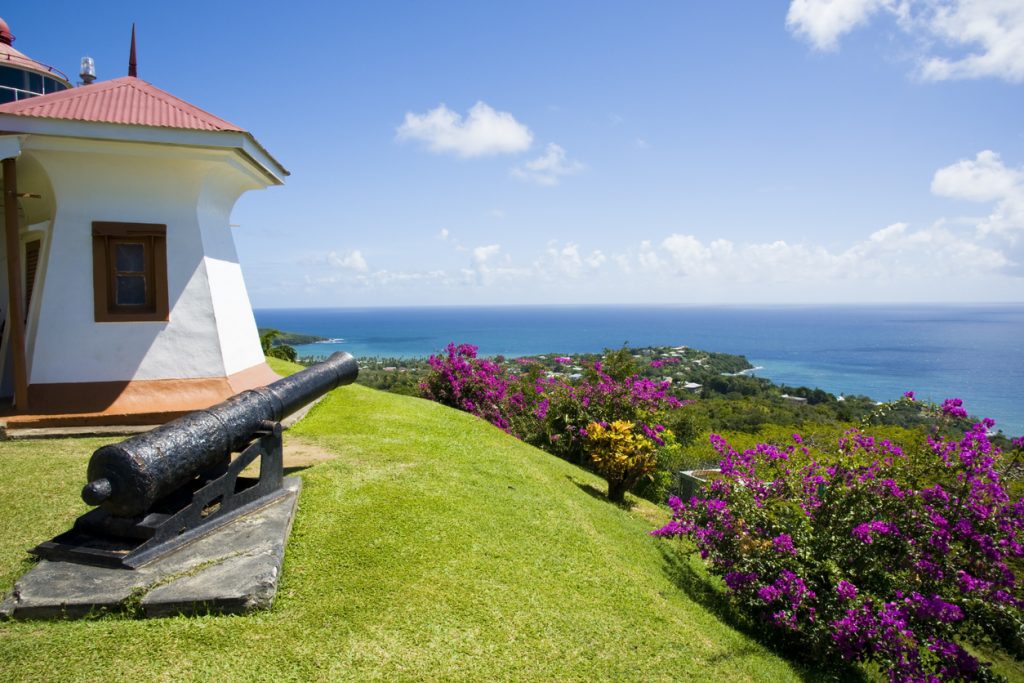
- Trinidad has dozens of beautiful beaches, all with powder-white sand and perfect turquoise water. Options include: Maracas, Tyrico, Las Cuevas, Toco, Mayaro, Chagville, Los Irons and Quinam. Due to sediment from South America’s Orinoco river, Quinam sometimes has brownish, silty water, but it doesn’t affect the beauty of the beach. And don’t be fooled by Maracas and Tyrico’s proximity. You’ll have to drive around a significant rock formation to reach the other, even though they’re situated a short distance apart. And because Maracas is so isolated, purchase a return ticket before boarding the bus out of the city. In Tobago, there are plenty of beautiful beaches to choose from, such as Pigeon Point, Store Bay, MT Irvine, Bucco, Grange, Englishman’s Bay, and Canoe Bay.
- Tobago Buccoo Reef and nylon pool – Located on the northern coast of Tobago is a coral reef submerged in absolutely perfect clear water. There is a nylon pool set up for swimming and several glass bottom boats that regularly tour the waters. The reef itself has been damaged from overuse the last few decades, so if you’re offered shoes to walk along the coral, politely decline in order to help preserve the area and allow it to restore to its original beauty.
- Divali and the Divali Nagar – Held annually in late October, or early November is a stunning festival of lights. In celebration of the Hindu tradition, small oil lamps known as Deyas are lit around the city in homes, schools, businesses and town squares. Open-air restaurants sell Indian food and Indian songs and dances are performed in public. Due to the large Indian population, Divali is a public holiday.
- Caroni Bird Sanctuary – If you’re a bird watcher, be sure to visit the sanctuary, and be sure to do it at dusk. As they nest for the evening, you’ll see the Scarlet Ibis, which is the national bird, as well as many others that are indigenous to the area. As the sanctuary is located in a swamp, beware of giant mosquitos that can bite through light clothing. Take a jacket or long-sleeved sweater, even in warm weather.
- Emperor Valley Zoo and the Botanical Gardens – Port of Spain in Trinidad is the only place one can see animals that aren’t normally found in the Caribbean. Through a series of rescues and by way of adoption, the zoo is home to birds, fish, lions, primates and reptiles. Just adjacent is the series of gardens belonging to the President’s house. You won’t find a lot of amenities, but it’s a wonderful spot to visit if you’re interested in walking around or sitting for a bite to eat.
- Fort King George and Goat Races – Two unique attractions in Tobago are both representative of their history. Fort George, set atop a cliff overlooking the ocean, is reminiscent of when Tobago was under colonial rule. Built by the British in 1871, you’ll find a row of cannons along the ridge and a museum that occupies a former barracks building. For lovers of horse racing, be sure to visit Tobago on Easter Tuesday, as you’ll get a chance to attend the annual goat race that started in 1925. Leave time to wander the grounds in order to see the competitive owners and trainers in action.
- Jazz Festival – Jazz lovers who wish to attend the annual festival in Tobago at the end of April should make airline and hotel reservations as early as possible. The popularity of this event has grown in recent years, due to the draw of internationally famous music, as well as the food and culture that goes along with the festivities.
- Leatherback Turtles – Those in town for the Jazz festival and goat races in April should definitely travel to Matura Beach. Each year, the leatherback turtles return in order to lay their eggs. The turtles are an endangered species, so the event is extremely protected. But conservation groups offer tours and if you’re interested and available, volunteers are always needed. This is one of the only places in the world to observe this remarkable part of the leatherback turtle’s life cycle.
- Tobago heritage festival – The Tobago heritage festival occurs over a period of two weeks every year between July and August. You’ll have a close-up encounter of the culture through dance, music, and storytelling that takes place around the clock. Bring an empty stomach, as food is served all day and well into the night.
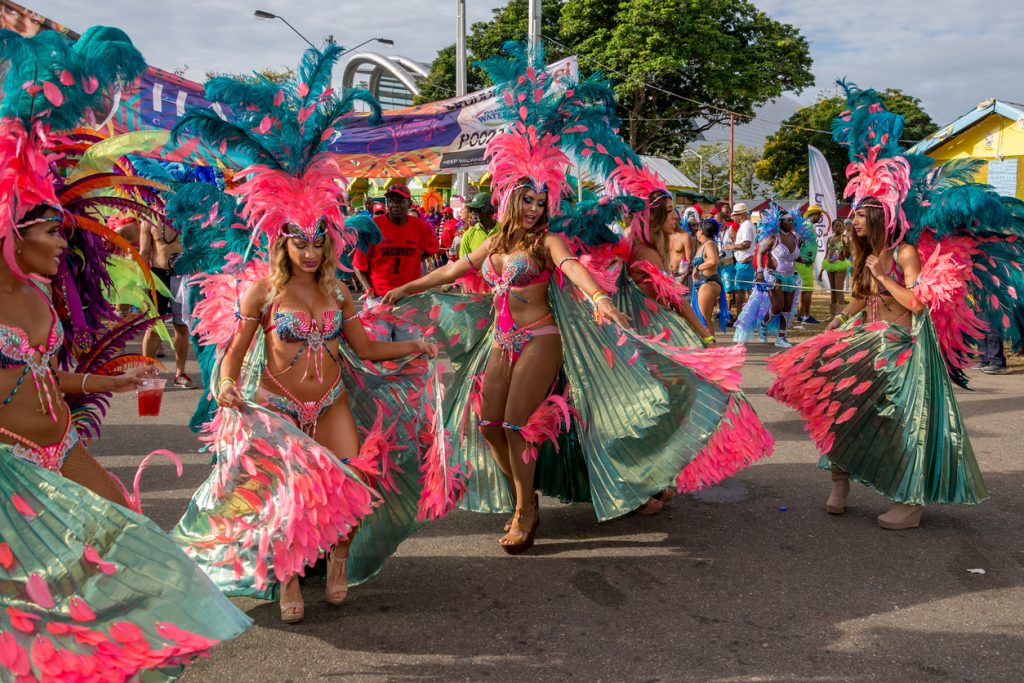
Accommodations
Depending on where you want to stay, you’ll either find a large selection of commercial hotels, such as Crowne Plaza, the Hilton and a Hyatt built in concentrated areas, or will have to settle for a local motel or guest house in the non-industrial parts of the island. Because the country is only now becoming a robust tourist destination, the variety and availability of guest houses is a unique feature of Trinidad and Tobago.
At the beaches, particularly in Tobago, guest houses are not only located right on the waterfront, but they are a great way to interact with the locals and learn about the culture. Two options are The Little Inn and the Miracle Healing guest house. Trinidad’s diverse population has resulted in the development of a multi-cultural infrastructure where you can find houses of worship for many religious denominations, world-class sporting facilities for cycling, cricket, and swimming, as well as a variety of performing arts throughout the country.
Food and Drink
When the British abolished slavery in the late 1700s, the labor force was augmented by an influx of immigrants from all over the world. With them came traditions, culture, and food. It’s easy to forget where you are when wandering through Trinidad and Tobago, as the streets are full of restaurants that sell food from India, Venezuela, China, Britain and France.
In Trinidad you’ll find many places with excellent Indian food. In Woodbrook, George Doubles, which is near Brooklyn Bar, sells the gamut of well-known Indian cuisine including rotis, which are like fried pita sandwiches stuffed with anything from chickpea curry to ground lamb with vegetables. If you want to grab a double on the go, Ali’s Doubles can be found throughout the islands. Small fried dumplings made of chickpeas called phoulourie, fried potato pies with corn and cow, and battered spinach known as saheena can all be grabbed on the go. Something unique to Trinidad and Tobago is fried pieces of shark served in bread with a variety of different sauces. It’s not just for brave foodies. It’s a local cuisine that should be tried by everyone. If you join a liming session, you’ll likely be served pelau, which is a dish specific to Trinidad. It’s a creole-type jambalaya with rice, meat, and spices. If you’re interested in Lebanese food, visit the upscale restaurant, Joseph’s, or casual diner Lawrence of Arabia. Barbecued chicken, Trinidad style, is not unlike the American version. It has loads of spices and can be purchased like fast food from roadside vendors, such as The Barbecue Hut in La Romaine.
There are several bakeries around the islands, and while they sell sweets that are known to Trinidad and Tobago, such as Benna Ball, Sugar Cake, Paw Paw Ball, and Toolum, they also sell meat pies and savory rolls. If you can’t find a bakery in town, you’ll likely find some food stands along the way to your beach destination where you can grab something sweet.
Whether you’re looking to have a cocktail or just a cool, refreshing drink, Trinidad and Tobago have the market cornered when it comes to beverages. Fruits and spices are combined in a number of ways to create juices such as Mauby, which is made from the bark of the Mauby tree and tastes of cinnamon and anise. In addition to ice cold fruit juices that you can purchase at any roadside food-stand, look for soft jelly coconut water. It’s hydrating and delicious.
And not to be forgotten is rum. Trinidad and Tobago’s past history as a sugar cane producing colony resulted in some of the most well-revered rum in the world. Black Label, Vat 19 by Fernandes, and White Oak, Old Oak by Angostura can be found in nearly every bar throughout the island. On the strong side of the spectrum is Puncheon. The moonshine of rum, Puncheon is more than 75% alcohol, and therefore not permitted to be taken outside of the country.
Nightlife
There is no shortage of excitement in Trinidad and Tobago. The Caribbean spirit that keeps visitors dancing all night can be found in spades almost everywhere you go. Warm evening air, beach bars, live music, cool drinks, and laughter are the hallmarks of Trinidad and Tobago after the sun goes down.
Tobago – Crown point is one of the central areas for those looking for some excitement. Start your night out at Bago’s Beach Bar. You’ll get sand in your toes while enjoying a tropical cocktail and an amazing view. Unless, of course, you get to Renmars first. It’s a rival spot with equally good drinks and stunning sunsets. For those looking for a more romantic atmosphere, Jenny’s is a European-style bar with outside tables and thousands of fairy lights. If music and dancing is your goal, there are several options. Shade is an open-air venue that attracts a younger set, Illusions offers vibrant music and plenty of opportunities to drink and dance, and if you’re interested in doing a little gambling, Jade Monkey has a casino located out back. They also have food, great deals on drinks, and karaoke on Wednesdays.
Trinidad – Visitors to the Port of Spain don’t need to worry about missing out on the action. If you’re unsure about where to start, just head toward Ariapita Ave and Rust St. You’ll find an eclectic cluster of clubs that can keep you busy all night long. Hipsters and artists gravitate toward the wine bar, Drink Lounge and Bistro, to experience culture, food and unique cocktails. The schedule is ever changing, but it doesn’t affect the wine or atmosphere – both of which are always cool.
If you’re looking for a place to hang out all day, you can watch Frankie’s morph from a casual place to grab lunch into a lively location where you’ll find many people engaging in the local tradition of liming. Those looking to join in are always welcome. Midway between “chill” and “hopping” is RuStreet. They offer food and a music set curated by a DJ on the weekends. Smokey & Bunty is still recovering from a recent fire, but rest assured, the ambiance excellent. Off the beaten path is Buzz Bar, which is a lot more laid back than its name suggests. Here you’ll find fairy light, open air, and city views. Paprika, however, is exactly what it sounds like. Laid out like a Middle Eastern bazaar, there are places to listen and dance to soca, drink uniquely flavored cocktails, and relax both inside and out. They take ambiance into their own hands by pumping dry ice throughout the dance hall.
Elsewhere in Port of Spain, you’ll find upscale venues like Fifty One Degrees, and Aria Lounge where well-dressed patrons go to drink and dance all night. No need to be on time – the party heats up the later it gets. La Habana is more traditionally Venezuelan and offers an outside street area to salsa dance and drink with friends.
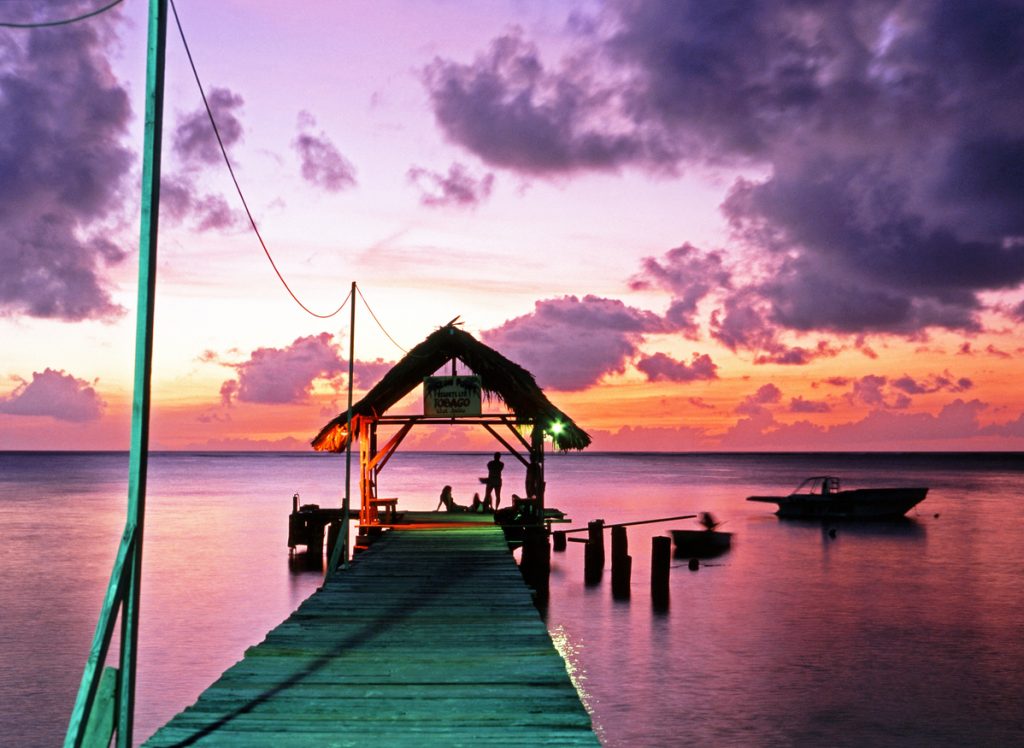
Tobago – Up the coast from Crown Point is Castara – a mellow, laid back town on the waterfront. The nightlife here is relaxing. Glasgow’s bar is at the top of one of the impressive cliffs along the edge of Parlatuvier Bay and is a combination of an interactive rum shop and a cookery with affordable local dishes, including fish and chips. A bit off the coastline is T’Keyah’s. It’s a liming spot that welcomes anyone who wants to join and serves very cold beer.
Along the southwest edge of the island on the leeward coast, Moon Over Water is a relaxing place to drink, play pool, throw darts, and enjoy DJs on the weekend who keep a steady stream of reggae and soca playing all night. An all-day spot for beer and food is Leggers set atop a cliff that overlooks a particularly beautiful corner of the ocean. In Scarborough, Barcode offers food, drink, and karaoke on Thursday that draws a big crowd, and in Maracas Bay, Uncle Sam’s does a shark bake on the grill during the weekends.
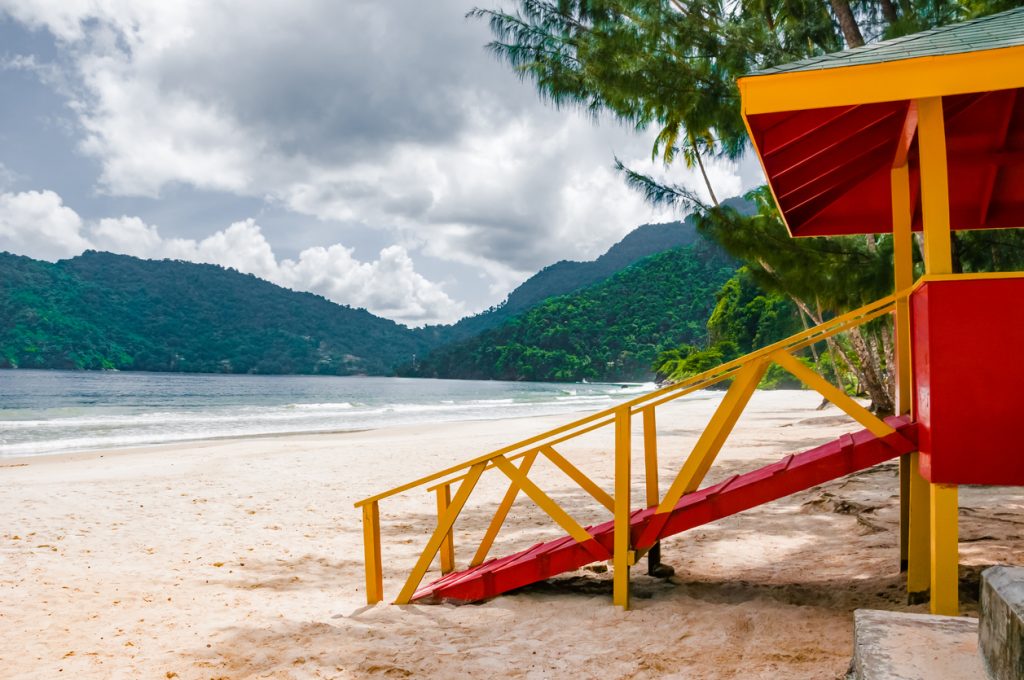
Sports and Adventure
Because of Trinidad and Tobago’s industrial heritage, tourism is just now beginning to boom. The islands have remained untouched for hundreds of years and are therefore a wonderful place to see pristine forests and stunning beaches, but it also means there is a lack of infrastructure when it comes to resorts and activities. Water sports and mountain adventures are run mostly be private companies and are limited to the area in which they’re found, but they’re exciting and worth the effort.
- Beaches – Both Trinidad and Tobago are lined with picture-perfect beaches that offer stunning views and soft white sand to walk on. Though they’re relatively undeveloped, you can generally find bars that serve food well into the night. Be sure to engage with locals to find the best beaches, which are usually the ones with the least number of visitors
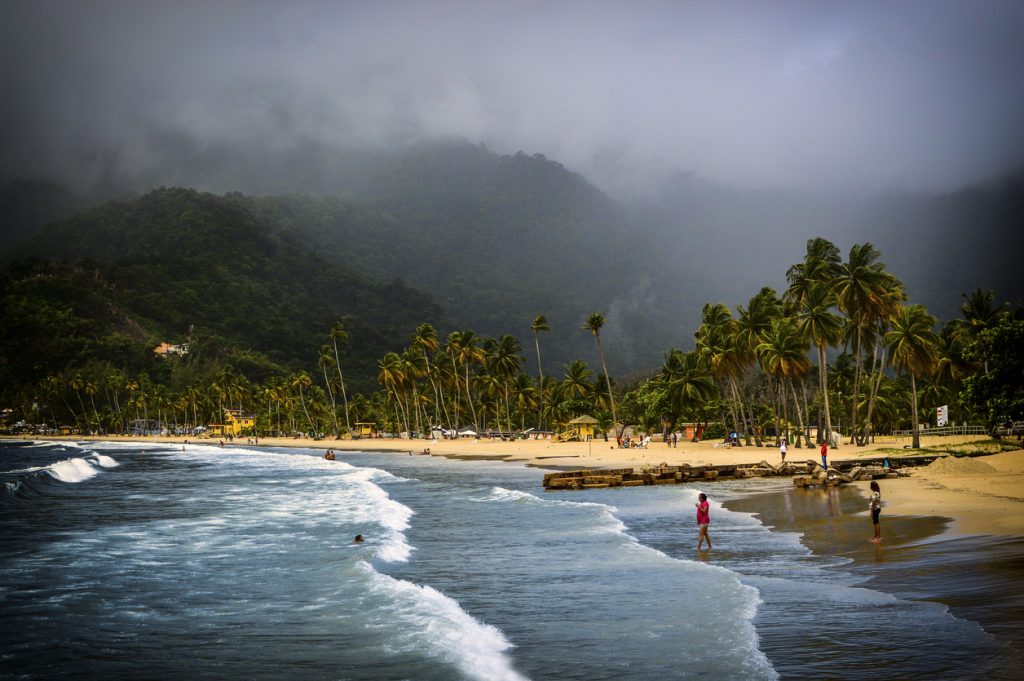
- Hiking – Hiking is a great way to see lush forests and mountaintops if you want to head inland. Because renting a car and driving around the islands is safe for visitors, a number of excellent trailheads are easily accessible. While the hiking trails offer stunning scenery, Trinidad and Tobago’s main draw is its breathtaking waterfalls. Trinidad in particular, has a number of falls to visit, including Aripo, Paria, Turure, Lalaja, and Habio. If you only have time to see one waterfall, make sure you go to Rio Seco. The hour-long family-friendly hike will take you to the short, fat waterfall considered one of the most beautiful in the world. Its smooth basin is filled with emerald-green water. And because the pool is deep, daredevils can safely jump in from the top of the gently sloped rockface. Two beautiful waterfalls in Tobago are Rainbow Falls and Lure Estate Falls.
- Nature & Wildlife – As with a number of Caribbean Islands, Trinidad and Tobago have a number of indigenous birds. They can be seen in the Caroni Bird Sanctuary, which offers tours to see the Scarlet Ibis roost for the evening. Asa Wright Nature Centre is a resort and scientific research center that has observed 159 different species of birds in and around the preserve. In addition to its beauty, Matura beach is special because it’s where both the leatherback and hawksbill turtles return to each year to lay their eggs in the sand. Leatherbacks are an endangered species, so great care is taken around the animals. But nature guides run tours to see the turtles that can grow up to five feet long, and if you’re able, you might even assist in tagging them before they return to the sea. Elsewhere around the island, you can go deep-sea fishing, sailing, or riding a glass bottom boat over the coral reefs. Other watersports, such as jet-skiing, are available for charter.
Safety and Security
An unfortunate feature of Trinidad and Tobago is quite a bit of crime. Because it is home to many different cultures, there is often violence that breaks out unexpectedly. Visitors are advised to follow all the requisite safety guidelines, such as not traveling with a lot of cash and jewelry, and avoiding areas known to be dangerous, especially at night. Your country will have specific recommendations for do’s and don’ts that will help understand the best way to keep yourself safe. There is a program called Smart Traveler Enrollment Program known as STEP, you should sign up for. This will send alerts about emergency situations and allow your position to be more readily available to law enforcement to locate you. As always, it’s highly recommended to hire guides from reputable companies.
The Story of the Hottest Chili
The Republic of Trinidad and Tobago is one of the most beautiful places on earth….
Tobago – stepping out of Trinidad’s shadow
Christopher Columbus sighted Tobago in 1498. Though he didn’t set foot on land, he did…


